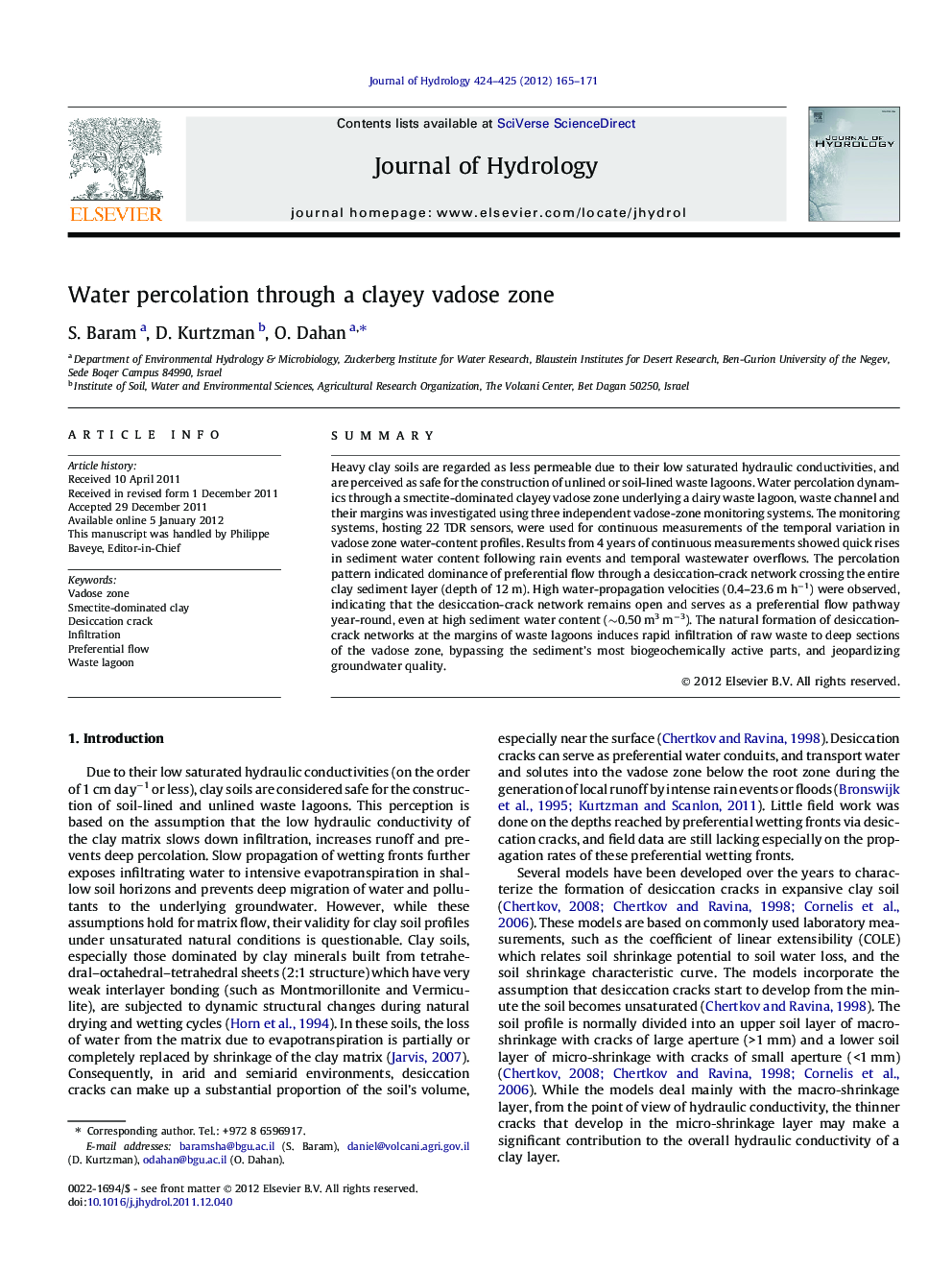| کد مقاله | کد نشریه | سال انتشار | مقاله انگلیسی | نسخه تمام متن |
|---|---|---|---|---|
| 4577106 | 1629999 | 2012 | 7 صفحه PDF | دانلود رایگان |

SummaryHeavy clay soils are regarded as less permeable due to their low saturated hydraulic conductivities, and are perceived as safe for the construction of unlined or soil-lined waste lagoons. Water percolation dynamics through a smectite-dominated clayey vadose zone underlying a dairy waste lagoon, waste channel and their margins was investigated using three independent vadose-zone monitoring systems. The monitoring systems, hosting 22 TDR sensors, were used for continuous measurements of the temporal variation in vadose zone water-content profiles. Results from 4 years of continuous measurements showed quick rises in sediment water content following rain events and temporal wastewater overflows. The percolation pattern indicated dominance of preferential flow through a desiccation-crack network crossing the entire clay sediment layer (depth of 12 m). High water-propagation velocities (0.4–23.6 m h−1) were observed, indicating that the desiccation-crack network remains open and serves as a preferential flow pathway year-round, even at high sediment water content (∼0.50 m3 m−3). The natural formation of desiccation-crack networks at the margins of waste lagoons induces rapid infiltration of raw waste to deep sections of the vadose zone, bypassing the sediment’s most biogeochemically active parts, and jeopardizing groundwater quality.
Figure optionsDownload as PowerPoint slideHighlight
► Moisture measurements in smectite clay vadose zone indicate rapid deep percolation.
► Water flow is controlled by a desiccation-crack network which prevails year round.
► Smectite clayey vadose zone does not protect against groundwater pollution.
Journal: Journal of Hydrology - Volumes 424–425, 6 March 2012, Pages 165–171